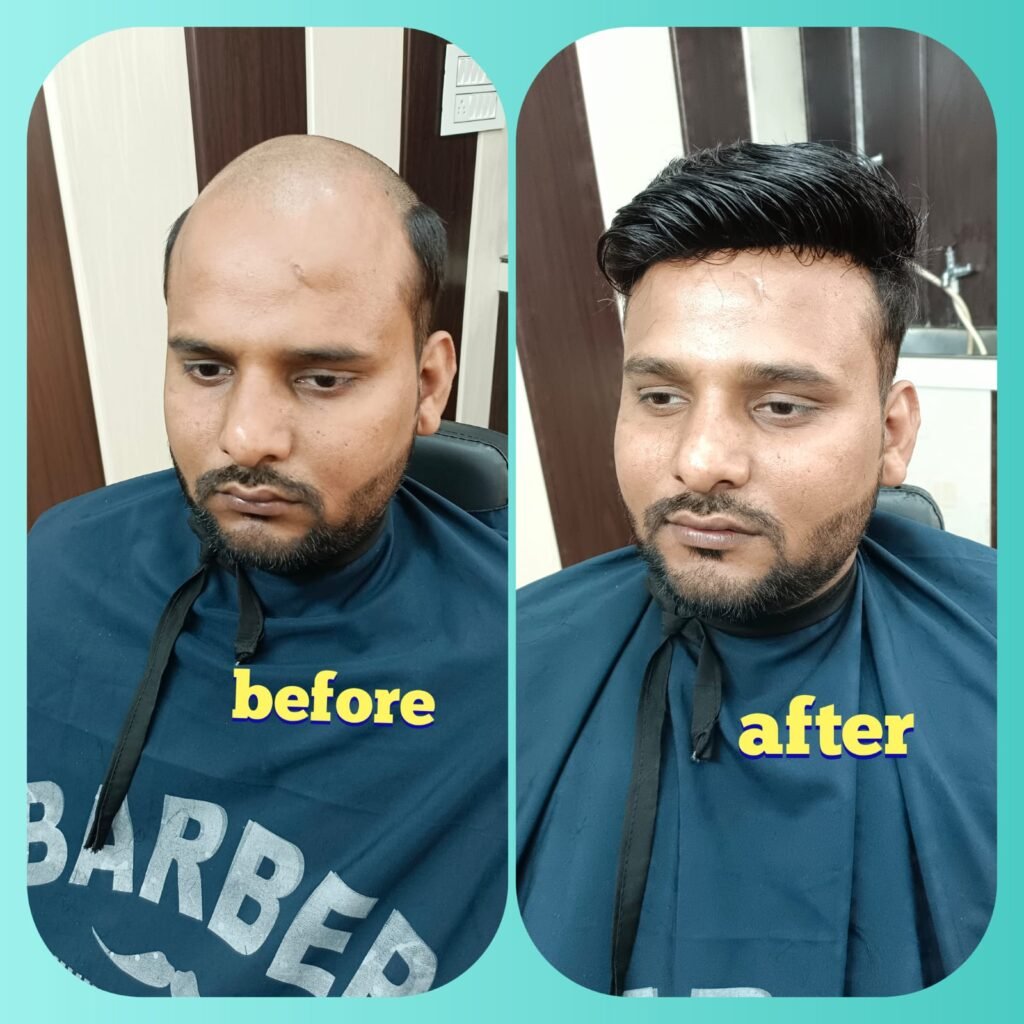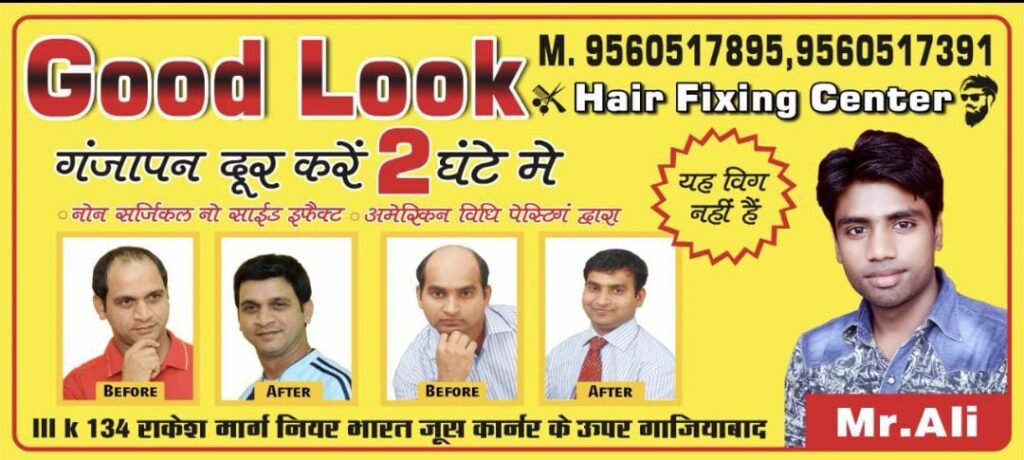Hair Restoration is a topic that resonates with millions of people worldwide. As we age or encounter various factors like stress, hormonal changes, and genetics, our once luscious locks might start to thin, recede, or fall out. This can lead to a loss of confidence and self-esteem. Fortunately, with advances in medical science and technology, hair regrowth procedures have become more accessible, effective, and natural-looking than ever before. In this article, we will explore the different options available for hair regrowth, the benefits and risks associated with each, and how you can regain your crowning glory confidently. 
Table of Contents
- Understanding Hair Loss
- The Causes of Hair Loss
- Genetic Predisposition
- Hormonal Imbalances
- Stress and Lifestyle Factors
- Male Pattern Baldness
- Female Pattern Hair Loss
- The Causes of Hair Loss
- Non-Surgical Hair Restoration Options
- Topical Treatments and Medications
- Minoxidil: The Gold Standard
- Finasteride: Blocking DHT
- Laser Therapy for Hair Growth
- PRP (Platelet-Rich Plasma) Therapy
- Topical Treatments and Medications
- Surgical Hair Restoration Options
- Follicular Unit Transplantation (FUT)
- Follicular Unit Extraction (FUE)
- Robotic Hair Transplantation
- Considering Hair Restoration: Who is a Good Candidate?
- Assessing Hair Loss Severity
- Understanding Realistic Expectations
- Age and Health Considerations
- Choosing the Right Hair Restoration Clinic
- Researching Credentials and Experience
- Reading Patient Reviews and Testimonials
- Evaluating Clinic Facilities and Technology
- The Hair Restoration Procedure: What to Expect
- Preparing for the Surgery
- The Day of the Procedure
- Post-Operative Care and Recovery
- Expected Timeline for Hair Growth
- Benefits and Risks of Hair Restoration
- Natural-Looking Results
- Boost in Self-Confidence
- Long-Term Satisfaction
- Risks and Complications to Consider
- Hair Restoration for Women: Special Considerations
- Female Hairline Design
- Hair Restoration for Thinning Hair
- Addressing Postpartum Hair Loss
- Hair Restoration for Ethnic Hair: Unique Challenges
- Addressing Hair Texture and Curl Pattern
- Creating a Natural Hairline for People of Color
- Scar Management in Ethnic Hair
- Combining Hair Restoration with Other Treatments
- Using Hair Loss Prevention Products
- Low-Level Laser Therapy as Adjunct Treatment
- Styling Tips to Enhance the Appearance of Thinning Hair
- The Emotional Journey of Hair Restoration
- Coping with Hair Loss: Emotional Impact
- Overcoming Fear and Anxiety
- Psychological Benefits of Successful Restoration
- Frequently Asked Questions (FAQs)
Non-Surgical Hair Restoration Options
Topical Treatments and Medications
One of the first lines of defense against hair loss is using topical treatments and medications. These solutions are applied directly to the scalp and can help slow down hair loss and promote regrowth. The most common topical treatment is minoxidil, which is available over the counter and in prescription-strength formulations. Minoxidil works by widening the hair follicles and prolonging the growth phase of the hair.
Laser Therapy for Hair Growth
Low-level laser therapy (LLLT) is another non-invasive option for hair regrowth. This treatment involves using red light to stimulate hair follicles, encouraging them to enter the active growth phase. LLLT can be administered through handheld devices or in-clinic sessions. Although it doesn’t work for everyone, many individuals have seen positive results with regular use.
PRP (Platelet-Rich Plasma) Therapy
Platelet-Rich Plasma (PRP) therapy is a revolutionary approach to hair regrowth. It involves drawing a small amount of the patient’s blood, spinning it in a centrifuge to separate the platelets, and then injecting the concentrated platelets into the scalp. PRP contains growth factors that can stimulate hair follicles, leading to new hair growth.
Surgical Hair Restoration Options
Follicular Unit Transplantation (FUT)
Follicular Unit Transplantation, commonly known as FUT or “strip” method, is a surgical procedure that involves removing a thin strip of hair-bearing skin from the back or side of the head. The hair follicles from the strip are then dissected and transplanted into the balding or thinning areas of the scalp. FUT is ideal for individuals who require a large number of grafts.
Follicular Unit Extraction (FUE)
Follicular Unit Extraction (FUE) is a more advanced and minimally invasive hair regrowth technique. In FUE, individual hair follicles are extracted one by one from the donor area (usually the back of the head) and transplanted to the recipient area. This method leaves tiny dot-like scars, which are less noticeable than the linear scar from FUT.
Robotic Hair Transplantation
Robotic Hair Transplantation is a cutting-edge procedure that uses artificial intelligence and robotics to assist the surgeon in performing FUE. The robotic system can identify and extract healthy hair follicles with precision and speed, making the process more efficient and accurate.
Considering Hair Restoration
Determining whether you are a suitable candidate for hair regrowth involves evaluating the extent of your hair loss and understanding the underlying causes. It is essential to have realistic expectations about the outcome of the procedure and to be in overall good health. Factors such as age, general health, and the availability of sufficient donor hair are considered during the evaluation process.
Choosing the Right Hair Restoration Clinic
When selecting a hair regrowth clinic, thorough research is crucial. Look for clinics with experienced and reputable surgeons, as well as positive feedback from previous patients. Consider the clinic’s success rate and the quality of patient care. Additionally, inquire about the clinic’s follow-up and support services to ensure a smooth recovery and optimal results.
The Hair Restoration Procedure
Before the surgery, your hair regrowth specialist will provide you with pre-operative instructions. On the day of the procedure, you will be given local anesthesia to ensure comfort during the surgery. The transplant process can take several hours to complete, depending on the number of grafts required. After the surgery, you may experience some temporary discomfort, swelling, and mild scabbing at the transplant site, but these typically subside within a few days.
Benefits and Risks of Hair Restoration
Hair restoration can have life-changing benefits, such as restoring your self-confidence and improving your overall appearance. Many patients report feeling more attractive and youthful after successful restoration. However, like any medical procedure, it comes with potential risks and side effects. Some of the risks include infection, bleeding, scarring, and, in rare cases, shock loss (temporary shedding of transplanted hair). It is essential to discuss these risks with your surgeon before making a decision.
Hair Restoration for Women
Hair restoration for women involves addressing unique concerns related to female hairline design and thinning hair. Female hair loss patterns are often different from male patterns, necessitating a customized approach. Women experiencing hair loss due to hormonal changes or postpartum factors need specialized care and assessment to determine the most suitable treatment plan.
Hair Restoration for Ethnic Hair: Unique Challenges
Ethnic hair regrowth presents unique challenges due to variations in hair texture and curl pattern. Skilled hair regrowth specialists consider these factors to create a natural-looking hairline that complements the individual’s ethnicity. Additionally, scar management in ethnic hair requires special attention to ensure optimal results.
Combining Hair Restoration with Other Treatments
To optimize the results of hair regrowth, patients can use hair loss prevention products like specialized shampoos, serums, and supplements. These products can complement surgical or non-surgical procedures and support healthy hair growth. Low-level laser therapy can also be used as an adjunct treatment to enhance the effectiveness of hair regrowth.
The Emotional Journey of Hair Restoration
Dealing with hair loss can take a toll on a person’s emotional well-being. It is essential to acknowledge the emotional impact and seek support throughout the hair restoration journey. Understanding the emotional aspects of hair loss and restoration can lead to better coping mechanisms and a more positive outlook.
Hair Restoration Services In Ghaziabad
If you’re looking for top-notch Best Hair Restoration services in Ghaziabad, “Good Looks Hair Services” is one of the premier establishments to consider. With a reputation for excellence and a team of skilled professionals, they offer a wide range of hair-related treatments and solutions to cater to various needs and preferences.

Why Choose Good Looks Hair Services?
- Experienced Professionals: The salon boasts a team of experienced and trained hair experts who stay updated with the latest trends and techniques.
- Quality Products: They use high-quality hair products to ensure the best results without compromising the health of your hair.
- Personalized Attention: Each customer is given individual attention, and the stylists listen to their preferences and requirements to deliver a tailored experience.
- Hygiene and Cleanliness: Good Look Hair Services maintains a clean and hygienic environment, adhering to strict standards to ensure a safe and comfortable experience for all customers.

Super Ralavant Post: Hairpiece In Ghaziabad: Elevating Y
Frequently Asked Questions (FAQs)
-
Is hair restoration surgery painful?
- Hair restoration surgery is performed under local anesthesia, so you will not feel pain during the procedure. However, some patients may experience mild discomfort or soreness in the donor and recipient areas after the surgery, which can be managed with pain medication.
-
How long does it take to see results after a hair transplant?
- The transplanted hair will shed within the first few weeks after the procedure, but new hair growth usually begins within three to four months. Significant improvement in hair density is typically seen around six to nine months after the surgery.
-
Are the results of hair restoration permanent?
- Yes, the results of hair restoration can be permanent. The transplanted hair is typically resistant to the hormone DHT, which causes hair loss in genetically susceptible individuals. However, it’s essential to continue taking care of your natural hair and follow your surgeon’s post-operative instructions to maintain long-lasting results.
-
Can women undergo hair restoration surgery?
- Yes, women can undergo hair restoration surgery. Female pattern hair loss and other hair loss conditions in women can be successfully treated with surgical hair restoration techniques. However, it’s essential to consult with a hair restoration specialist to determine the most suitable approach for each individual case.
-
Are there any non-surgical alternatives for hair restoration?
- Yes, there are several non-surgical alternatives for hair restoration, such as topical treatments, medications, laser therapy, and PRP therapy. These options can be effective in slowing down hair loss and promoting hair regrowth, especially in the early stages of hair loss.
Conclusion
Hair restoration is a beacon of hope for those struggling with hair loss. With a variety of non-surgical and surgical options available, individuals can choose a solution that aligns with their needs and preferences. Remember, it’s essential to consult with a qualified hair restoration specialist and set realistic expectations. Take that first step towards rediscovering your crowning glory and regaining your confidence.
